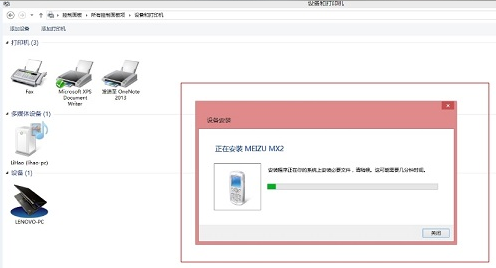可以将文章内容翻译成中文,广告屏蔽插件可能会导致该功能失效(如失效,请关闭广告屏蔽插件后再试):
问题:
I've got a text file that contains several 'records' inside of it. Each record contains a name and a collection of numbers as data.
I'm trying to build a class that will read through the file, present only the names of all the records, and then allow the user to select which record data he/she wants.
The first time I go through the file, I only read header names, but I can keep track of the 'position' in the file where the header is. I need random access to the text file to seek to the beginning of each record after a user asks for it.
I have to do it this way because the file is too large to be read in completely in memory (1GB+) with the other memory demands of the application.
I've tried using the .NET StreamReader class to accomplish this (which provides very easy to use 'ReadLine' functionality, but there is no way to capture the true position of the file (the position in the BaseStream property is skewed due to the buffer the class uses).
Is there no easy way to do this in .NET?
回答1:
There are some good answers provided, but I couldn't find some source code that would work in my very simplistic case. Here it is, with the hope that it'll save someone else the hour that I spent searching around.
The "very simplistic case" that I refer to is: the text encoding is fixed-width, and the line ending characters are the same throughout the file. This code works well in my case (where I'm parsing a log file, and I sometime have to seek ahead in the file, and then come back. I implemented just enough to do what I needed to do (ex: only one constructor, and only override ReadLine()), so most likely you'll need to add code... but I think it's a reasonable starting point.
public class PositionableStreamReader : StreamReader
{
public PositionableStreamReader(string path)
:base(path)
{}
private int myLineEndingCharacterLength = Environment.NewLine.Length;
public int LineEndingCharacterLength
{
get { return myLineEndingCharacterLength; }
set { myLineEndingCharacterLength = value; }
}
public override string ReadLine()
{
string line = base.ReadLine();
if (null != line)
myStreamPosition += line.Length + myLineEndingCharacterLength;
return line;
}
private long myStreamPosition = 0;
public long Position
{
get { return myStreamPosition; }
set
{
myStreamPosition = value;
this.BaseStream.Position = value;
this.DiscardBufferedData();
}
}
}
Here's an example of how to use the PositionableStreamReader:
PositionableStreamReader sr = new PositionableStreamReader("somepath.txt");
// read some lines
while (something)
sr.ReadLine();
// bookmark the current position
long streamPosition = sr.Position;
// read some lines
while (something)
sr.ReadLine();
// go back to the bookmarked position
sr.Position = streamPosition;
// read some lines
while (something)
sr.ReadLine();
回答2:
FileStream has the seek() method.
回答3:
You can use a System.IO.FileStream instead of StreamReader. If you know exactly, what file contains ( the encoding for example ), you can do all operation like with StreamReader.
回答4:
If you're flexible with how the data file is written and don't mind it being a little less text editor-friendly, you could write your records with a BinaryWriter:
using (BinaryWriter writer =
new BinaryWriter(File.Open("data.txt", FileMode.Create)))
{
writer.Write("one,1,1,1,1");
writer.Write("two,2,2,2,2");
writer.Write("three,3,3,3,3");
}
Then, initially reading each record is simple because you can use the BinaryReader's ReadString method:
using (BinaryReader reader = new BinaryReader(File.OpenRead("data.txt")))
{
string line = null;
long position = reader.BaseStream.Position;
while (reader.PeekChar() > -1)
{
line = reader.ReadString();
//parse the name out of the line here...
Console.WriteLine("{0},{1}", position, line);
position = reader.BaseStream.Position;
}
}
The BinaryReader isn't buffered so you get the proper position to store and use later. The only hassle is parsing the name out of the line, which you may have to do with a StreamReader anyway.
回答5:
Is the encoding a fixed-size one (e.g. ASCII or UCS-2)? If so, you could keep track of the character index (based on the number of characters you've seen) and find the binary index based on that.
Otherwise, no - you'd basically need to write your own StreamReader implementation which lets you peek at the binary index. It's a shame that StreamReader doesn't implement this, I agree.
回答6:
I think that the FileHelpers library runtime records feature might help u. http://filehelpers.sourceforge.net/runtime_classes.html
回答7:
A couple of items that may be of interest.
1) If the lines are a fixed set of characters in length, that is not of necessity useful information if the character set has variable sizes (like UTF-8). So check your character set.
2) You can ascertain the exact position of the file cursor from StreamReader by using the BaseStream.Position value IF you Flush() the buffers first (which will force the current position to be where the next read will begin - one byte after the last byte read).
3) If you know in advance that the exact length of each record will be the same number of characters, and the character set uses fixed-width characters (so each line is the same number of bytes long) the you can use FileStream with a fixed buffer size to match the size of a line and the position of the cursor at the end of each read will be, perforce, the beginning of the next line.
4) Is there any particular reason why, if the lines are the same length (assuming in bytes here) that you don't simply use line numbers and calculate the byte-offset in the file based on line size x line number?
回答8:
Are you sure that the file is "too large"? Have you tried it that way and has it caused a problem?
If you allocate a large amount of memory, and you aren't using it right now, Windows will just swap it out to disk. Hence, by accessing it from "memory", you will have accomplished what you want -- random access to the file on disk.
回答9:
This exact question was asked in 2006 here: http://www.devnewsgroups.net/group/microsoft.public.dotnet.framework/topic40275.aspx
Summary:
"The problem is that the StreamReader buffers data, so the value returned in
BaseStream.Position property is always ahead of the actual processed line."
However, "if the file is encoded in a text encoding which is fixed-width, you could keep track of how much text has been read and multiply that by the width"
and if not, you can just use the FileStream and read a char at a time and then the BaseStream.Position property should be correct





